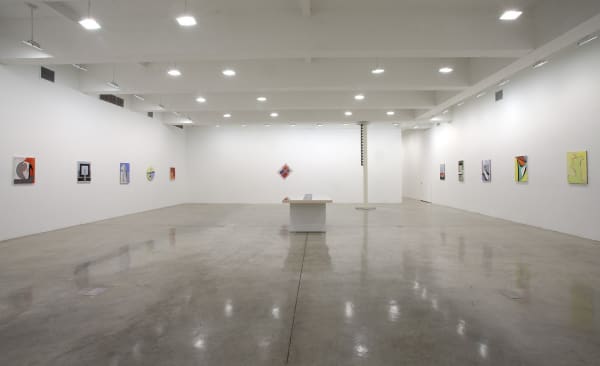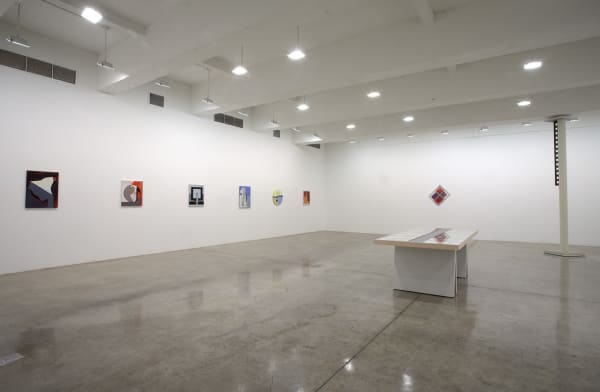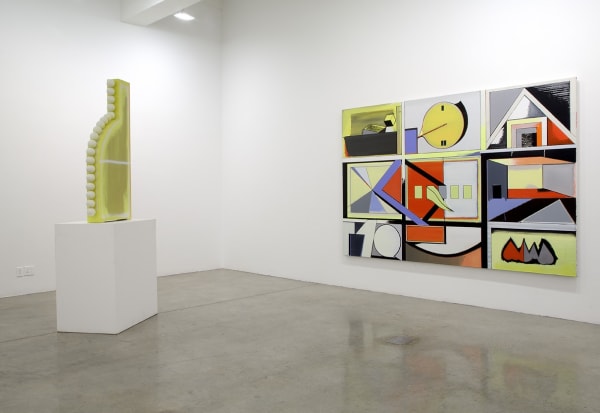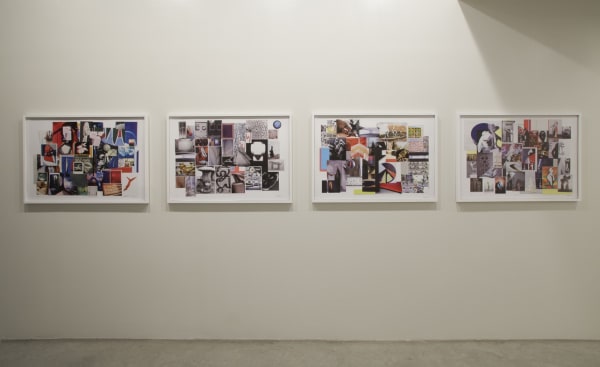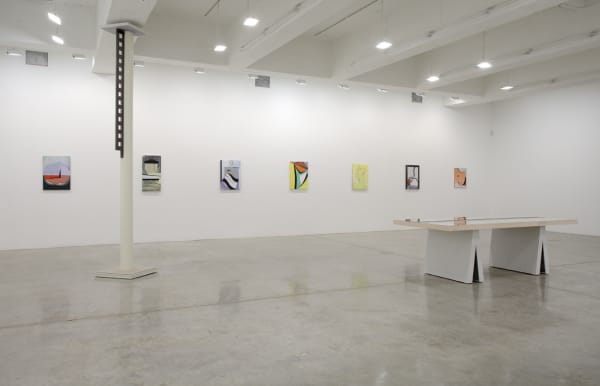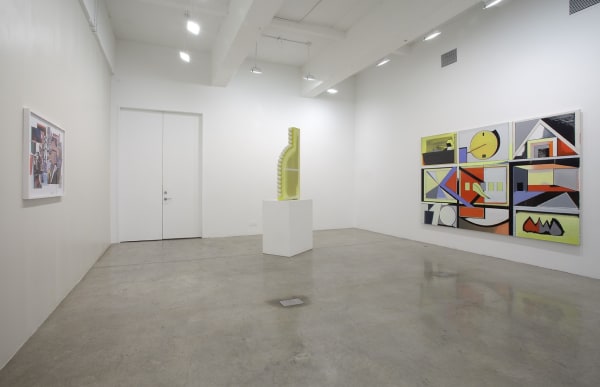Thomas Scheibitz: A Panoramic VIEW of Basic Events: Tanya Bonakdar Gallery, New York
Tanya Bonakdar Gallery is very pleased to present A Panoramic VIEW of Basic Events, an exhibition of new paintings, sculptures, drawing/collages, and prints by Thomas Scheibitz. For his seventh solo show with the gallery, Scheibitz continues to draw from classical painting and architecture, the contemporary urban landscape, and the influence of popular culture. Filtering these sources through his own lens, he creates evocative and powerful pieces that blur the line between abstraction and figuration.
In a palette of murky grays, smoky purples, and pale blues, paired with sharp primaries, and vivid neons, the new paintings and sculptures in A Panoramic VIEW of Basic Events are full of recognizable components—the numeral “1,” a backwards comma, a peering eye—interwoven with the artist’s own invented geometric assemblages. Culled from his archive of ephemera, which includes newspaper clippings, snapshots, magazine ads, plates from art books and historical texts, as well as other cultural artifacts, Scheibitz’s imagery is pared down to its barest formal properties, then recombined, layered, and expanded upon. For the first time, in this exhibition Scheibitz shows the viewer how he works with his cache of source material to build compositions: pairing seemingly incongruous found images in collages, he then adds drawings that riff on their formal properties, and hint at how all these components might be synthesized into a painting or sculpture. These “worksheets,” and in fact the installation as a whole, serve as an investigation of composition across disparate media, as the artist shows us how each element of his practice relates to the others. Breaking down his formal vocabulary into its constituent parts, in A Panoramic VIEW of Basic Events, Scheibitz lets us into his creative cosmos, showing the viewer the connections within a constellation of works.
Organizational systems—maps, graphs, and charts—have long been of interest to Scheibitz, and have served as the starting point for many of his most iconic pieces. In this new body of work, instead of using the map as a formal point of departure, from which to create an abstract composition, Scheibitz creates a map of his own process-- an overview that demonstrates how each piece fits into a cohesive whole. While existing autonomously, each image can also be connected to the other works in the show. The collaged drawings are displayed on a table made by the artist that resembles both an independent sculpture and a pedestal, and each of these collages reference one of the sixteen small paintings installed on the walls of the main space. In some of the collages the finished painting even appears as an element, complicating the notion that the works on paper are studies for the paintings—rather each is its own related but independent final product.
Installed in the back room, and seemingly a composite of the smaller works in the front gallery, the main work in the exhibition, from which the show takes its title, unfurls across the wall. Here Scheibitz explores how imagery can be recombined; compositional elements that might have existed autonomously as small paintings become details within a larger work. The endless reconfiguration of imagery is the basis of the series of prints installed in the gallery’s entryway as well. Titled for A.G.C.T., the four nucleic base acids that make up human DNA, these pieces similarly represent the foundations of Scheibitz’s practice. In lush color, the prints depict combinations of objects and images from Scheibitz's archive precisely arranged in unexpected combinations and juxtapositions. These prints also refer to the concept of “Schlagbild” or pictorial slogans—images that convey as much meaning as a headline, or a block of text. While each individual image is important, their arrangement is equally crucial, and in his careful composition of these pieces, Scheibitz references Aby Warburg—a professor who in the early 20th century created a non-heirarchical approach to image classfication. Like Warburg, Scheibitz employs his own methods of visual organization, to create works that are at once readable and enigmatic.
Based in Berlin, Scheibitz has upcoming solo exhibitions at MMK, Museum für Modern Kunst, Frankfurt Am Main, Frankfurt, Germany and at the Wexner Center for the Arts in Columbus Ohio. Notable recent exhibitions include Thomas Scheibitz: Lineage ONE / Stilleben & Statistics, Jarla Partilager, Berlin, 2011-2012 (solo); Thomas Scheibitz: Il flume e le sue fonti/ The River and its Source, Collezione Maramotti, Reggio Emilia, Italy, 2011 (solo); Surveyor: An exhibition of human exploration, observation, and construction of the landscape, organized by Curator Heather Pesanti, Albright-Knox Art Gallery, Buffalo, NY, 2011 (group); If Not in This Period Of Time - Contemporary German Painting 1998-2010, Museu de Arte de São Paulo, Brazil, 2010-2011 (group); A moving plan B- chapter ONE, Selected by Thomas Scheibitz, The Drawing Room, London, 2010 (group); Der ungefegte Raum, Galerie im Taxispalais, Innsbruck, Austria, 2010 (solo); among others.
All installation images above: Photo by Jean Vong
